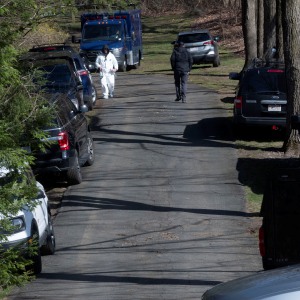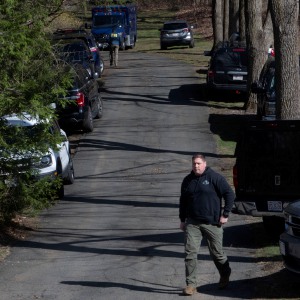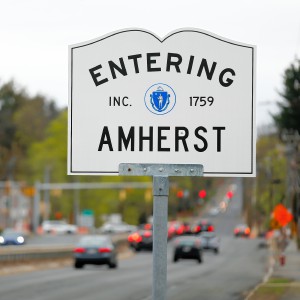Gypsy moths, which stripped state trees in 2016, hatching anew
| Published: 05-01-2017 10:48 AM |
AMHERST — Entomologists at University of Massachusetts Amherst report that some of this season’s first gypsy moth egg masses have begun to hatch, as observed on April 26 in Belchertown at a location off Route 202.
Extension entomologist Tawny Simisky reports that a single egg mass can hold as many as 500 to 1,000 eggs.
Gypsy moth is a non-native invasive insect in North America. The caterpillars prefer oak but will feed on maple, birch, poplar, willow, apple and other deciduous plants and can defoliate whole trees. When their preferred hosts have been defoliated and populations are high, the caterpillars will eat conifer needles such as eastern white pine, spruce and hemlock. This was observed in 2016.
In fact, last year, gypsy moth caterpillars defoliated over 350,000 acres in Massachusetts, according to the state Department of Conservation and Recreation, and the concern is that if 2017 is as dry as the previous two years in May and June, the situation with could intensify, Simisky and colleagues point out.
Until last year, the state had not been heavily affected by the caterpillars, which can grow up to about 2.5 inches long. This is in part because since about 1989, a caterpillar-killing fungus had greatly reduced their numbers. However, drought conditions in 2015 and 2016 reduced the fungus’s ability to infect young caterpillars, resulting in renewed significant damage to forests, parks and yards, the experts add. In 2016, the hardest hit areas in Massachusetts were on Cape Cod, in the southeast part of the state and in southeastern Worcester, Franklin, Hampshire and Hampden counties.
Simisky says home and business owners and other land managers who wish to protect valued ornamental landscape trees and shrubs can use certain natural insecticides derived from soil-dwelling bacteria such as Bacillus thuringiensis Kurstaki (Btk) to fight the caterpillar invasion, and these are most useful when the caterpillars are very young, just after hatching. It will not help as much with older caterpillars, however, which are not as susceptible to the bacterium.
Btk is “practically” non-toxic to birds, fish, non-target insects including pollinators such as honeybees, and other aquatic organisms, the experts note, and is not toxic to people and pets. However, this strain may be toxic to moths and butterflies. Non-chemical management strategies such as banding trees with sticky traps or physically removing egg masses before they hatch are an option, though they are labor intensive and may not be as effective.
]]>
Article continues after...
Yesterday's Most Read Articles
 FBI conducts court-authorized investigation at Hockanum Road home in Hadley
FBI conducts court-authorized investigation at Hockanum Road home in Hadley
 Area property deed transfers, April 11
Area property deed transfers, April 11
 Amherst Town Council calls emergency meeting to consider rescinding funds for Jones Library project
Amherst Town Council calls emergency meeting to consider rescinding funds for Jones Library project
 Hadley man arrested on firearms, ammunition charges after FBI searches home
Hadley man arrested on firearms, ammunition charges after FBI searches home
 Amherst launches red card campaign for immigrant rights
Amherst launches red card campaign for immigrant rights
 Northampton Police search for suspect in water pellet shooting
Northampton Police search for suspect in water pellet shooting






 Northampton School Committee backs ‘strong’ budget, while acknowledging they likely won’t get it
Northampton School Committee backs ‘strong’ budget, while acknowledging they likely won’t get it Amherst Town Council approves University Drive overlay district
Amherst Town Council approves University Drive overlay district Local Dems push state’s congressional delegation for action
Local Dems push state’s congressional delegation for action
